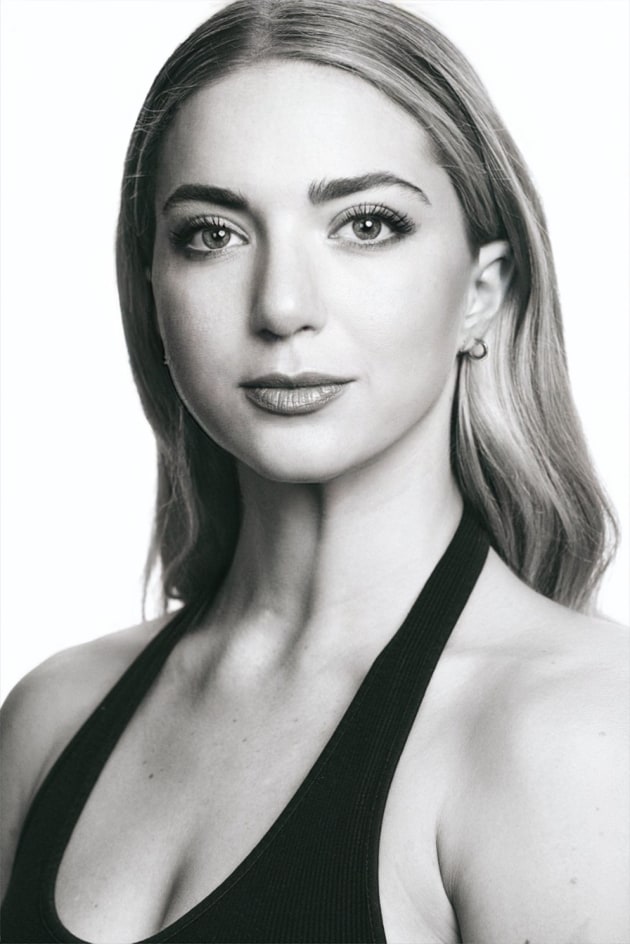Body shame: a ballerina's story
NICOLA WILLS tells how she repaired her relationship with her body.

Nicola Wills is an Australian dancer now in her 11th year with Opera Ballet Vlaanderen, Belgium’s national company, after a brief time with Ballet Dortmund in Germany. She has recently been selected to present her own choreography at the Hannover International Choreographic Competition.
Wills is enjoying a rich and fulfilling career, achieving the dreams of many aspiring ballerinas. But her journey has not been easy. At around 16 years old she developed an eating disorder, starting with bulimia, followed by “regimented borderline anorexia”, as she calls it, that went on for years. “It really changes your brain chemistry in a negative and addictive way,” she explains, “it’s so difficult to stop.”
Most probably as a result of her poor diet, she developed hormone problems and did not menstruate until a doctor intervened and put her on the pill at age 24. This hormonal shift resulted in weight gain, exacerbated by an injury which prevented her from exercising. As a result, she was sidelined by the dance company and was no longer offered plum roles.
Her prospects improved, however, when the company had a change of artistic director. Sidi Larbi Cherkaoui brought with him a contemporary repertoire and a more holistic way of seeing dance, which was reflected in a more humane and empathetic attitude among the ballet staff. “They accepted me for what I was. I just started getting more confident,” Wills explains.

Nonetheless, it wasn’t really until the enforced lockdowns of the Covid pandemic that Wills was really able to release herself from the grip of her eating disorder. “I had this irrational and competitive feeling like I had to prove that I could come back skinny and in shape for my job. But then I thought, this is stupid, I don’t know how long this will go on. I can’t put this pressure on myself. So I lived my life and enjoyed food and exercised when I felt like it and that’s kind of how I am now.
“I feel I’ve repaired my relationship with my body, I’m listening to what my body is telling me and I really don’t think I’ve ever looked better. My body has adapted to this without any stress and I wish I’d done that sooner.”
What is her advice for dancers suffering from body image problems?
“See a professional, a psychologist,” she says, “and form a support around you with friends or parents. It’s important to be healthy if you want longevity in this career – if you want to prevent injuries, if you want to pick up choreography quickly, to have the emotional and mental stability and have the energy to do a full day of professional work and excel in performances. If you aren’t fuelling your body, you risk a shorter career.
“You also damage the very fine connection you have with your body in terms of feeling when you’re hungry or not hungry, and what kinds of food you actually feel like eating. Your body gives you very important signals but if you’re constantly ignoring them, at some point it’s not sustainable.”
Social media?
“It’s dangerous, because you are just looking at the dancers’ facility, like seeing how they can do so many pirouettes, or over-splits and all the calisthenics-type moves, but it actually shifts the focus away from being an artist,” Wills advises.
“I’m telling you, when you get into a company people don’t care if you can do an over-split or a backbend or a walkover!”
What about language teachers use in class?

“Language should always be positive. Comments that don’t come from a vocational point of view can be dangerous. Teenagers pick up on things, even if it’s in the form of praise. Commenting on dancer’s appearance when it doesn’t have anything to do with their technique or performance qualities can be damaging”.
What about the overall expectation in dance of a particular type of body?
“Sometimes I think the workload of the job itself will keep you in shape, But I also feel we have a trained unconscious bias to prefer and praise this Balanchinesque ideal of a ballerina. With the growing culture of today there should be an inclusive focus on women also being strong and athletic in the dance industry. Companies are doing a lot more contemporary work and it requires a different kind of strength and awareness and with that strength comes a different kind of aesthetic. That should be understood a bit more from directors and rehearsal masters. When I shifted my focus away from acquiring the ‘perfect ballet body’ it opened up so much space for me to focus on improving how I move and took away so much anxiety from my job. Even if I don’t have the ‘ideal’ physique, I still get a lot of audience members complimenting me on my performance, and most importantly I feel good in my own skin”.
As told to KAREN VAN ULZEN
This article is an excerpt from a feature called Body Shaming and Ballet in the current print issue of Dance Australia, with more advice from Queensland Ballet Academy's Zara Gomes. Don't miss this crucial reading! Buy your copy from your favourite retail outlet or on-line here or here.
Print is for keeps!

